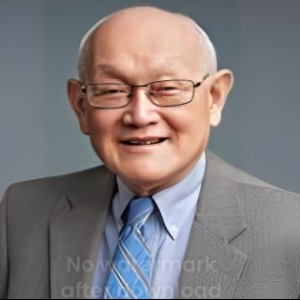Title : New pathophysiologic approach to hyponatremia yields revolutionary results, identification of natriuretic protein that causes renal salt wasting and new syndrome of renal salt wasting in alzheimers disease
Abstract:
The approach to hyponatremia is in a state of flux, especially in differentiating Syndrome of Inappropriate Secretion of Antidiuretic Hormone (SIADH) from cerebral-Renal Salt Wasting (RSW) because of diametrically opposite therapeutic goals of water-restricting in SIADH and administering saline in RSW. We differentiated SIADH from RSW by utilizing an algorithm based on Fractional Excretion (FE) of urate and failure of isotonic saline infusions to dilute the urine or correct the hyponatremia in SIADH as compared to excretion of dilute urines and correction of hyponatremia in RSW. We also identified the natriuretic factor we previously demonstrated in neurosurgical patients with RSW and in Alzheimer’s disease (AD).
Results: Of 62 hyponatremic patients, (A) 17 patients (27%) had SIADH, 11 were nonresponsive to isotonic saline, and 5 normalized a previously high FEurate after correction of Hyponatremia; (B) 19 patients (31%) had a reset osmostat based on normal FEurates and spontaneously excreted Dilute Urines; (C) 24 patients (38%) had RSW, 21 had no clinical evidence of cerebral disease, 19 had saline-induced dilute urines; 2, 10 required D5W to prevent rapid increases in serum sodium to prevent osmotic demyelination, 11 had persistently increased FEurate after correction of Hyponatremia. (D) 1 patient had Addison disease with a low FEurate and (E) 1 patient (1.6%) had hyponatremia due to hydrochlorothiazide. We identified haptoglobin related protein without signal peptide (HPRWSP), the first potent inhibitor of proximal tubule sodium transport, as the natriuretic factor in a patient with RSW and in AD.
Conclusions: RSW is much more common than is perceived with 21 of the 24 patients with RSW lacking evidence of cerebral disease, supporting our proposal to change cerebral salt wasting to RSW. HPRWSP can serve as a biomarker for RSW to simplify diagnosis of RSW on first encounter, direct proper therapy, improve clinical outcomes and identifying a new syndrome of RSW in AD. Development of an inhibitor to HPRWSP will more effectively treat patients with RSW. HPRWSP will more effectively treat congestive heart failure when combined with a distal diuretic.
Audience Take Away Notes:
- Audience will be presented with improved physiologic approach to hyponatremic and hyponatremia related conditions that have shown cerebral or renal salt wasting to be much more common than perceived with identification of the natriuretic protein that causes salt wasting, in addition to new syndrome of renal salt wasting in Alzheimer’s disease
- This is a very complicated area of medicine that is undergoing a paradigm shift that will eventually be simplified by using the natriuretic protein as a biomarker of renal salt wasting to simplify diagnosis and treatment
- This is possible but a very difficult area to make contributions without a firm background in physiology
- Yes, this provide a practical solution to a problem that could simplify or make a designer’s job more efficient
- Future studies will greatly simplify diagnosis and treatment of renal salt wasting




